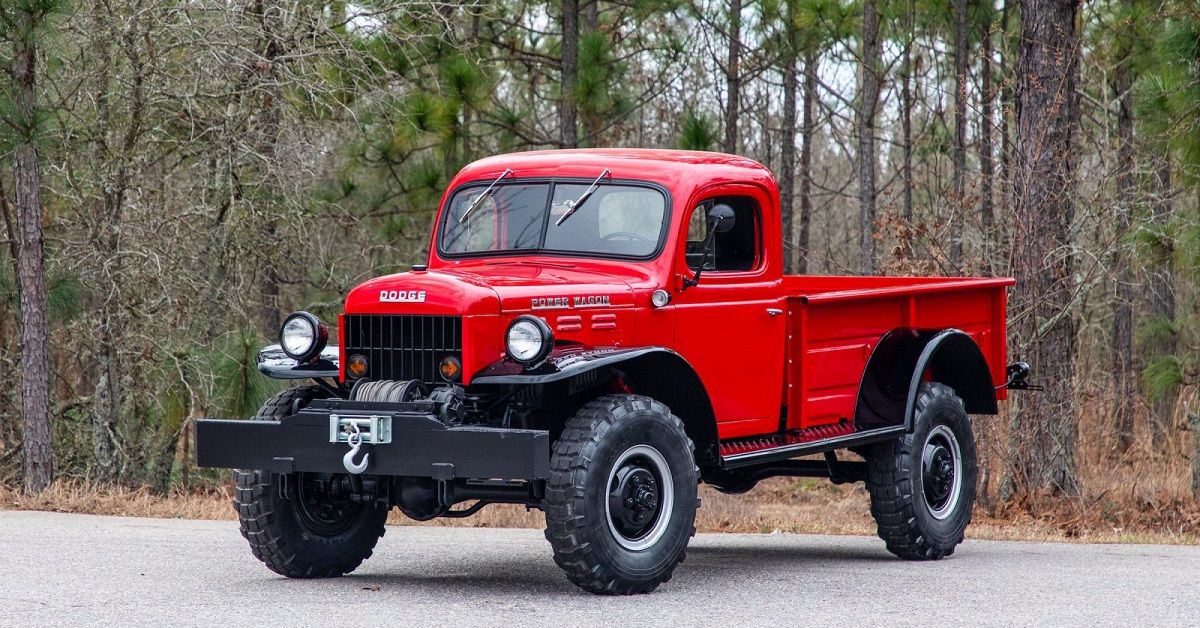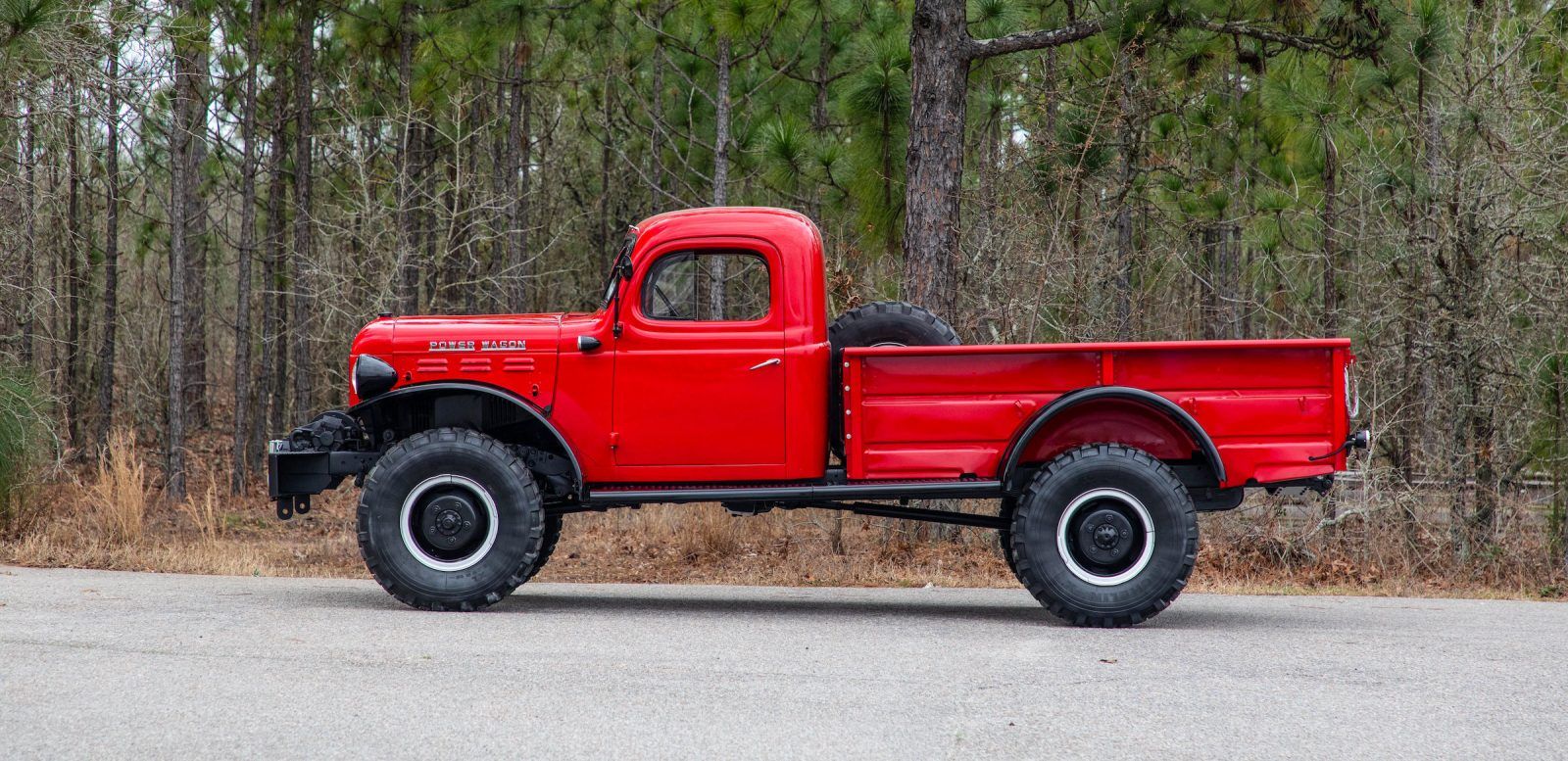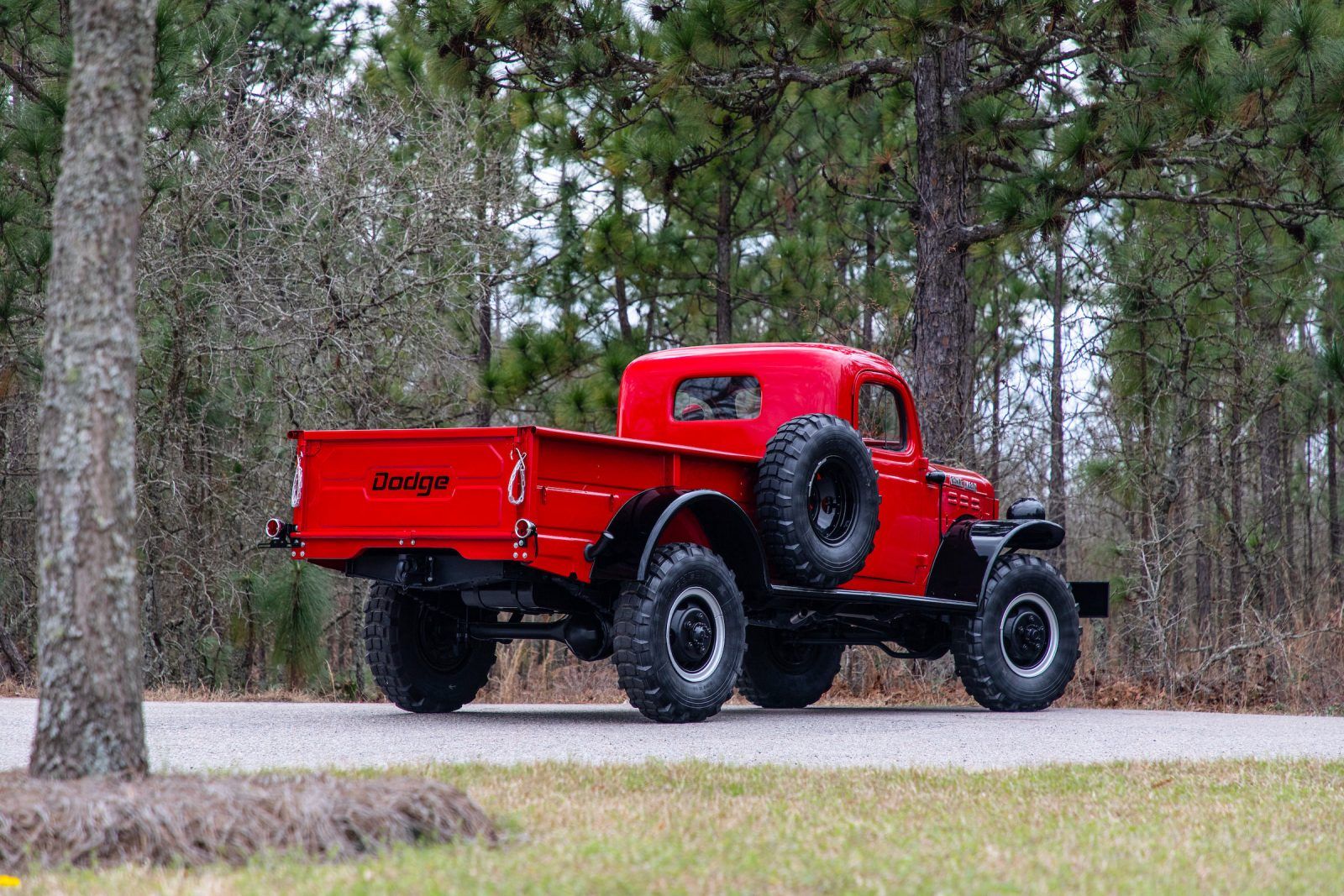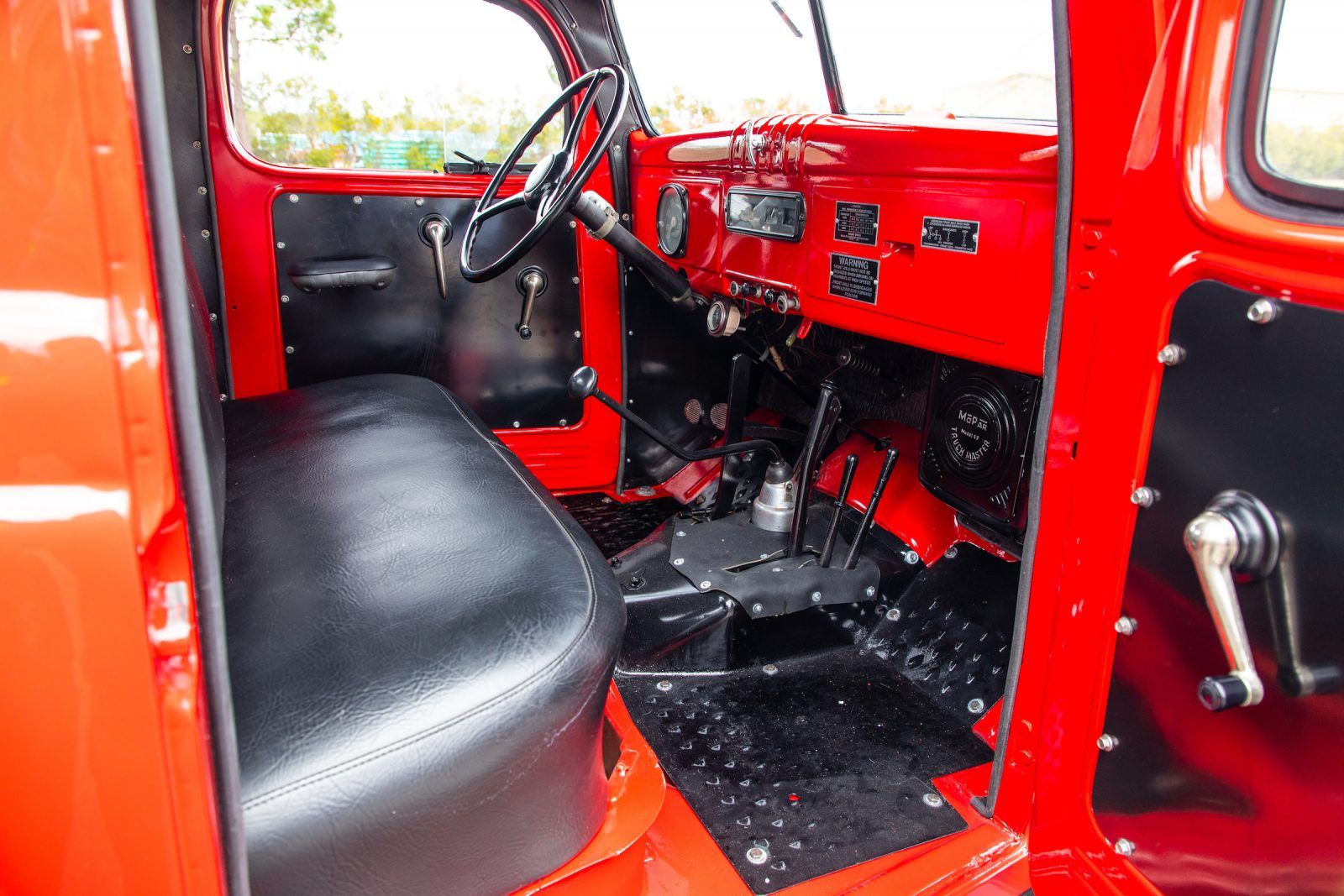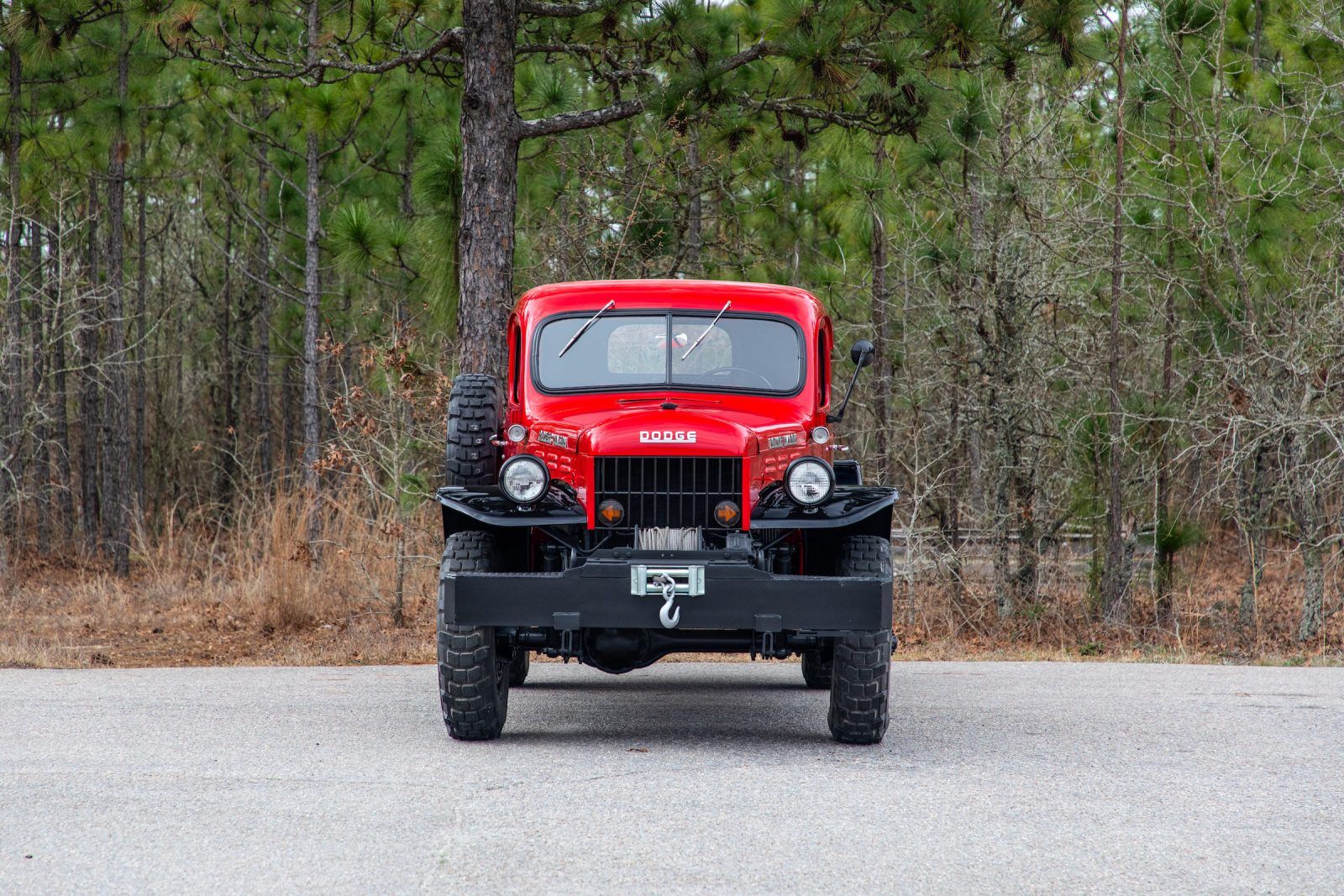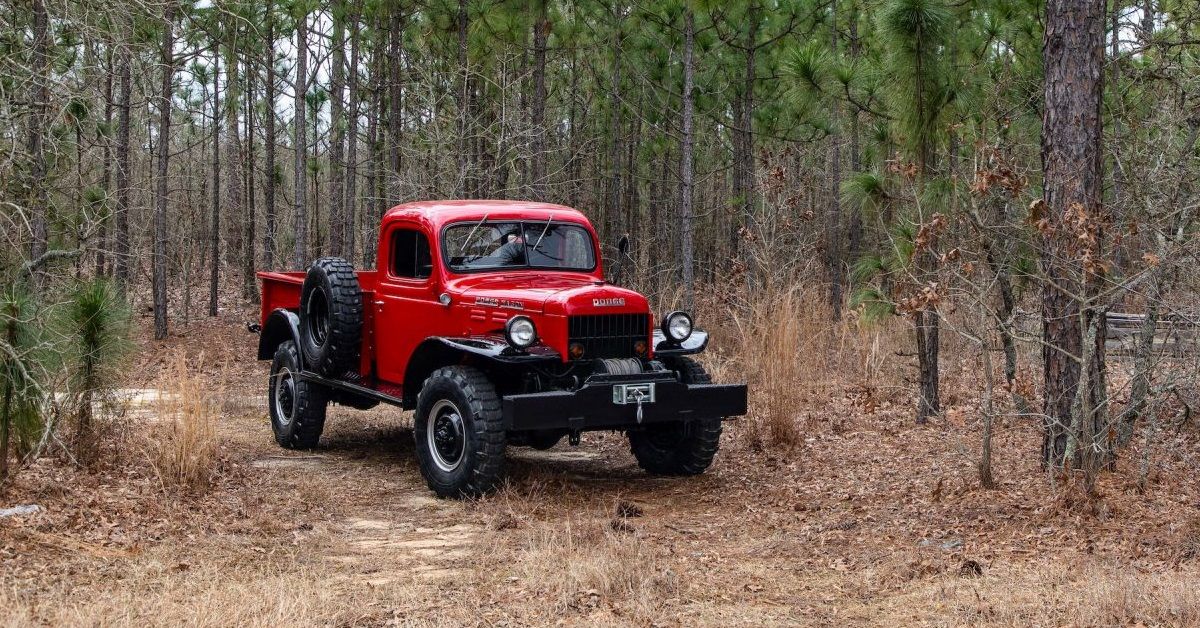Today, the four-wheel-drive truck is a staple of American life. But the modern 4x4 was originally invented out of necessity during World War Two. When soldiers returned home, Dodge offered the first civilian four-wheel-drive in the Power Wagon, and many veterans became lifelong fans. Once tested in battle, then driving the greatest generation, the Power Wagon is among the most respected badges from Detroit. Read on to learn more about the vehicle that started the lifted truck craze. As the granddaddy of all 4x4 trucks: the 1945 Dodge flat-fender T137 demands respect.
Dodge Built Trucks During WW2
The Nazis war machine was the world’s first fully internal-combustion-powered military. Their resulting, lightning-quick attacks paralyzed many countries. The Allies would have never won World War Two without the ingenuity and production power of Detroit. Willys invented and built the Jeep. Ford manufactured over 80,000 aircraft. And Dodge churned out the legendary WC series military truck.
The army asked Detroit for a capable weapons and personnel carrier platform, a 4x4 capable of navigating snow, water, and axle-deep mud. Dodge answered the call and pioneered a relatively small 4-wheel-drive truck with reliable construction and a bumper-mounted winch.
During the war, Dodge supplied the military with over 300,000 light and medium-duty trucks. In only five years, Dodge leveraged frontline feedback to drastically improve their military vehicle. There were three distinct generations of VC--then WC--Dodge military trucks. Their rating increasing from ½ ton to ¾ ton, and finally to the Dodge 6x6’s 1 ½ ton. Atop this common drivetrain, Dodge manufactured 52 separate truck configurations, from command cars to radio vans, to weapons platforms.
The resulting vehicle was adored by soldiers on two fronts. Many military drivers preferred the stable trucks to the bouncier Jeep. Some soldiers even nicknamed the Dodge WC series “Beeps.” Powered by Dodge, the allied military won the war in August 1945.
The Power Wagon Was An Evolution Of Military Trucks
Today, factory 4x4 trucks are common. From mudding to rock-crawling, off-roading culture is alive and well. But in 1945, no Detroit automaker had ever sold a civilian 4x4 truck. But Dodge knew soldiers had prized its reliable, capable military trucks. The automaker was confident that tradesmen and outdoorsmen would buy a 1-ton Dodge 4x4. They resolved to build the Power Wagon, derived from the Dodge's WC series military trucks.
During WWII, Dodge had engineered and manufactured 52 various models of medium-duty trucks. Building a peacetime workhorse was not a problem of engineering, it was a problem of selection. The Dodge company decided it was important the truck boast ground-clearance and four-wheel-drive. In addition, they prioritized a full 1-ton loadbearing capability and both forward and rear Power Take-Off (PTO) shafts to operate implements such as farm equipment. Finally, the truck would be powered by an efficient and robust 230 cubic inch flathead inline-six-cylinder engine. Without power in ample supply, they would have to mate this engine to a four-speed transmission. The engineers used a two-speed transfer case to enable four more “crawler” 4WD gears. Read more on the Allpar website.
The cab for the Power Wagon was modified from a heavy-duty truck Dodge was building for the Chinese market. Unlike the wartime trucks, the Power Wagon had roll up windows, a bench seat with springs, and heat. Prototypes of the civilian Power Wagon wore a low-sided bed taken from a production 2WD truck. But the finalized Power Wagon featured a high-sided box eight feet long and four-and-a-half feet wide with steel cargo sliders and wood slats painted black. The bed ended with a tailgate painted with “Dodge” and featuring a center brace to support loads while the tailgate was down. The truck bed was the only part of the vehicle engineered specifically for the civilian Power Wagon. During the war, Dodge had installed shaped teardrop fenders on the first VC trucks, but soldiers had to remove them as they filled up with mud. Dodge swapped to high, flat fenders for the rest of their VC and WC truck production. Dodge also installed these familiar flat fenders on their first-generation Power Wagon. Because of this, many enthusiasts refer to their first-generation Power Wagons as “flat fender Power Wagons.”
Wheelbases ranged from 126-inches to 147-inches. All trucks came with 16-inch tall, 6.5-inch wide 5-lug steel rims. Trucks also came from the factory with eight-ply bias tires. The overall length of the Power Wagon was 199 inches, its load capacity 3,000 pounds, and its overall weight 7,600 pounds. Top speed was approximately 45 miles per hour.
The Power Wagon Was The First 4x4 Truck Available
The internal name for the Power Wagon project was T137, and some Power Wagon owners still refer to their first-generation trucks as T137s. But when Dodge announced the truck, they called it the WDX General Purpose Truck (W a continuation of the military name, C meaning “civilian,” and X for 4x4). The marketing team searched for a catchier model title and by the 1945 launch, Dodge’s new truck was the WDX Power Wagon. The vehicle became one of the most successful in the company’s history. Dodge dropped WDX from the truck’s name by 1947, but the Power Wagon badge has been in use—in some form or another—ever since.
There was no initial sales explosion for the Dodge Power Wagon. But veterans who had returned to trades such as farming or logging bought one of the familiar flat fendered vehicles. Then they drove them for years. Fire departments and utility companies began to catch on and buy Power Wagons for their fleet trucks. Eventually, hunters, outdoorsmen, and off-roading enthusiasts sought out the bulletproof Power Wagon. Classic Power Wagon trucks are still prized, the average costs roughly $25K! See a beautiful 1954 Power Wagon reviewed on Silodrome.
The Power Wagon line was discontinued when the Ram Truck line was launched in 1981, but the 4WD truck models were badged as Ram Power Wagons. Today, the Power Wagon badge is awarded to Dodge’s most off-road-capable Ram 2500s. The legacy began with the brave Dodge trucks of WW2 and the 4x4 Power Wagons waiting to welcome the soldiers home.

